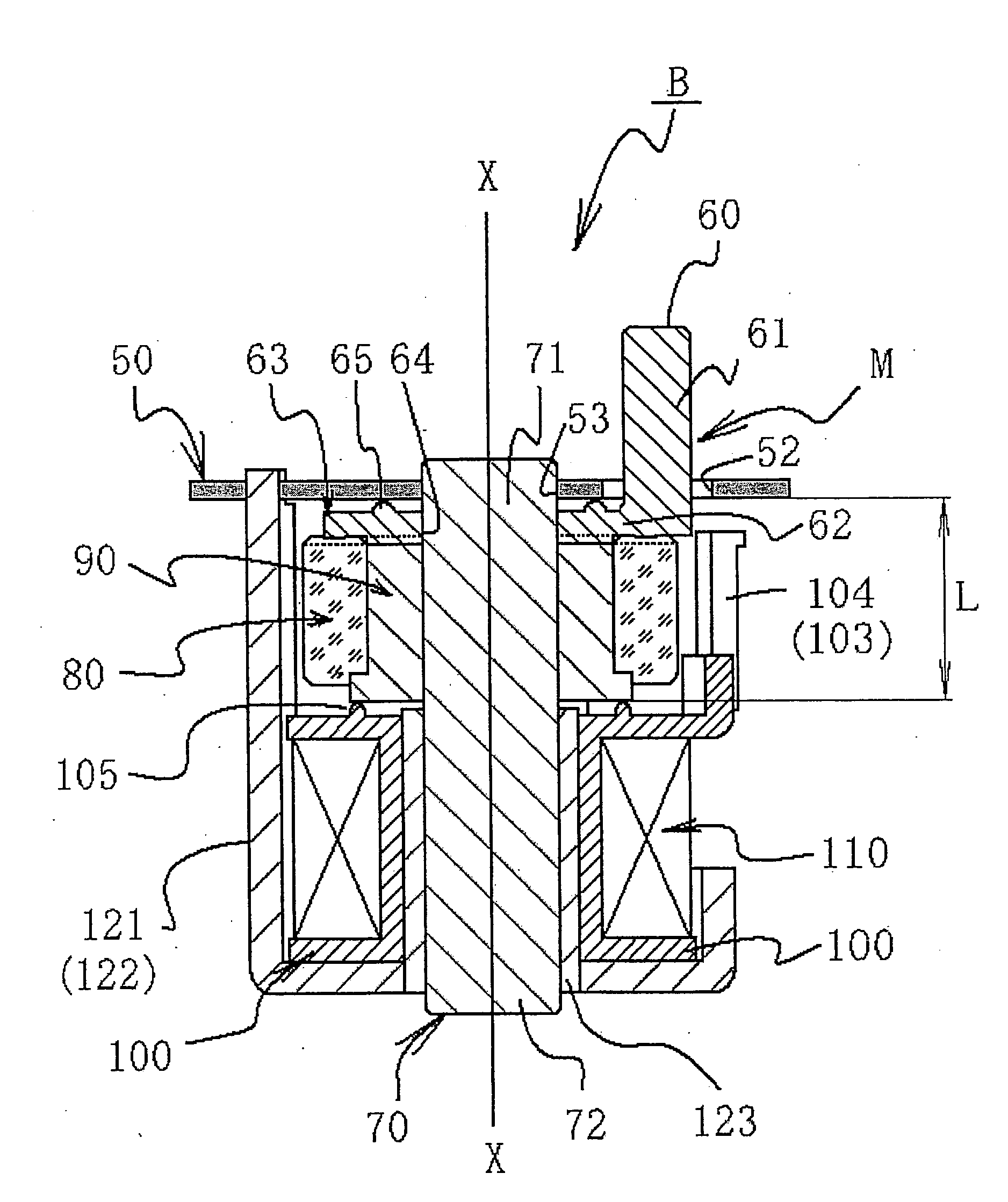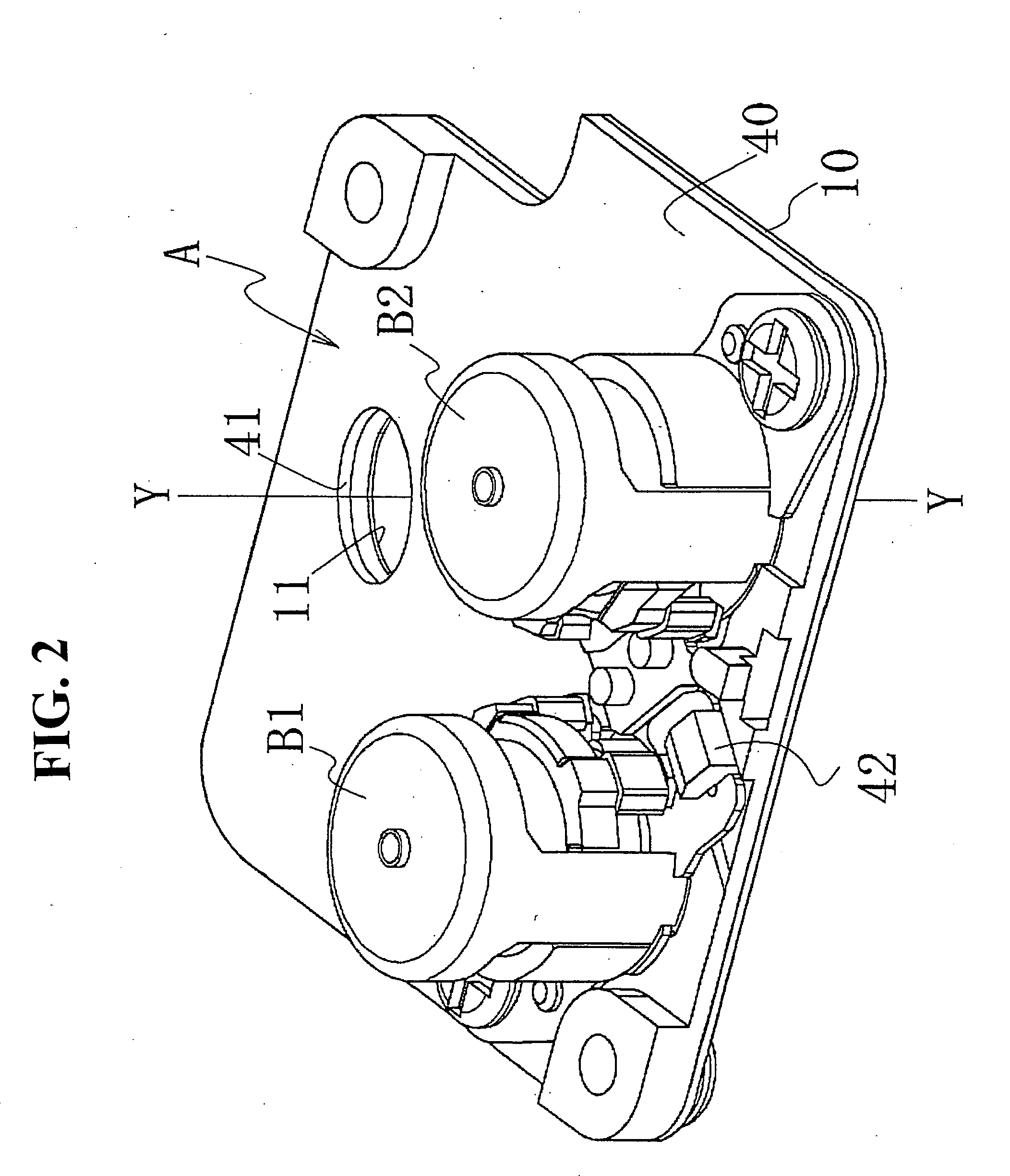Magnet rotor and electromagnetically-driving device using the same, and optical apparatus with light quantity-control device
a technology of electromagnetic driving and magnet rotor, which is applied in the direction of magnet circuit shape/form/construction, instruments, horology, etc., can solve the problems of difficult to design a molding die, the diameter of the rotary shaft is smaller, and the problem of machining the rotary shaft is difficul
- Summary
- Abstract
- Description
- Claims
- Application Information
AI Technical Summary
Benefits of technology
Problems solved by technology
Method used
Image
Examples
Embodiment Construction
[0043]The exemplary embodiments of FIGS. 14A and 14B include a supporting structure of a magnet rotor in association with the invention. First, a theory of the supporting structure of the magnet rotor in association with the invention will be described with reference to FIG. 14A. The magnet rotor includes: a pair of upper and lower rotor supporting members 50, 100; a permanent magnet 80; a rotary shaft 70; and a driving arm 60. The permanent magnet 80, rotary shaft 70 and driving arm 60 are assembled into a rotor assembly M. In FIG. 14A, the permanent magnet 80 is configured so as to have a hollow, cylindrical shape. In the center of the permanent magnet, a shaft bore 80a is provided in which the rotary shaft 70 is fitted.
[0044]A base end portion of the driving arm 60 is fitted in the rotary shaft 70 by the following method. A first fitting part 80b composed of slotted concave parts (82 and 83 in FIG. 7), is formed in an upper end face of the permanent magnet 80. In the driving arm ...
PUM
 Login to View More
Login to View More Abstract
Description
Claims
Application Information
 Login to View More
Login to View More - R&D
- Intellectual Property
- Life Sciences
- Materials
- Tech Scout
- Unparalleled Data Quality
- Higher Quality Content
- 60% Fewer Hallucinations
Browse by: Latest US Patents, China's latest patents, Technical Efficacy Thesaurus, Application Domain, Technology Topic, Popular Technical Reports.
© 2025 PatSnap. All rights reserved.Legal|Privacy policy|Modern Slavery Act Transparency Statement|Sitemap|About US| Contact US: help@patsnap.com



